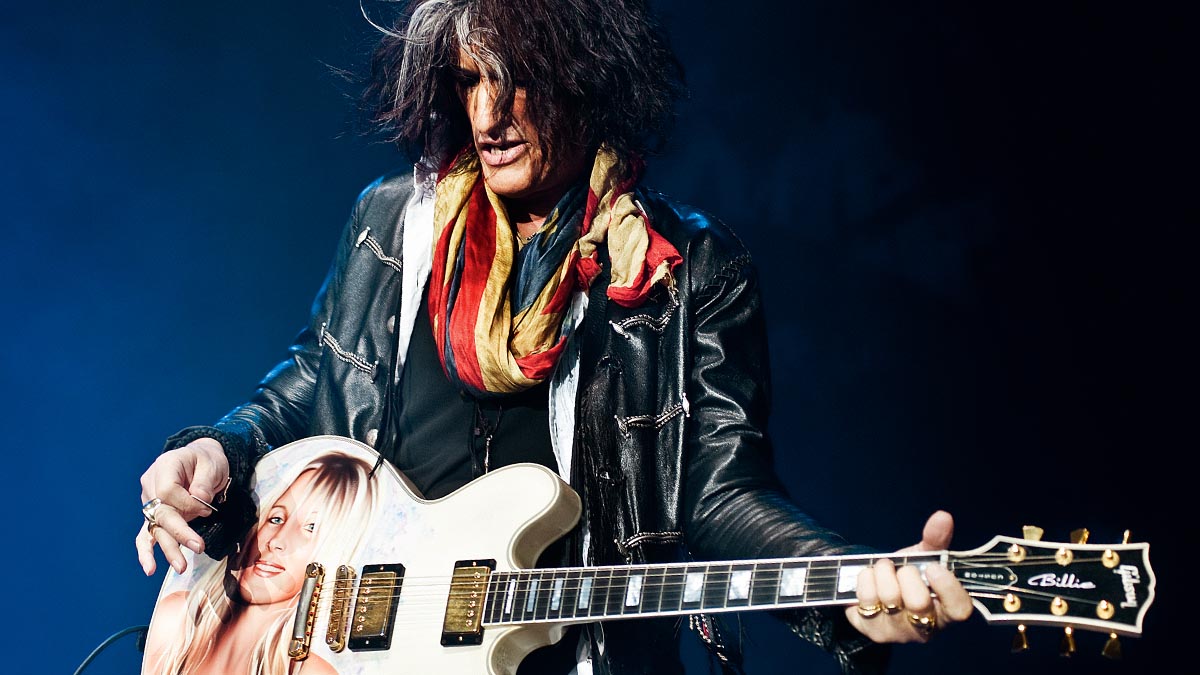Gabriel Akhmad Marin: “I don’t play many chords. I’m more of a melodic single-note player, and the fretless guitar is a great instrument for that”
Meet Consider the Source’s fusion wizard, who’s channeling the sounds of Eastern Europe and Asia through his fretless guitar and a trio of pedalboards

When you speak to Consider the Source guitarist Gabriel Akhmad Marin, it doesn’t take long to get the impression that music has taken him far and wide.
For example, to help further his appreciation and understanding of Hindustani music, he left the U.S. to go and live with lap steel virtuoso Debashish Bhattacharya in India. And whenever said mentor came to visit the U.S., Marin would stay with him for a month at a time – hoping to absorb as much of his musicality as humanly possible.
It’s this kind of dedication to his craft that’s made him one of the most musically rounded guitar players around today, mixing up Western influences as varied as Guthrie Govan, John McLaughlin and Alain Johannes with the lesser-known sounds of the Middle East and Asia. Below, he tells GW about the secrets to his phrasing and tone.
When did your fascination with world music begin?
“I came up playing a wide variety of music. I was into Eastern European music early. I heard a lot as a kid because I have family from there, but I was also into jazz and classical. When I got into guitar I was really into grunge bands like Alice in Chains and Soundgarden.
“Soon after that I wanted to figure out how to play the Eastern European stuff on guitar, then getting into Indian, Turkish and Persian music. I’ve been fortunate enough to really study these styles with great musicians. Since I play fretless guitar, I can really get the phrasing and ornamentation right.
“I get hired to play classical Turkish or Persian music with people using traditional instruments – and then I’m the guy who brought the fretless guitar! It’s cool to introduce it into that kind of setting. In Consider the Source, I like making things sound super-futuristic… so it’s a crazy mix of old and new approaches.”
Get The Pick Newsletter
All the latest guitar news, interviews, lessons, reviews, deals and more, direct to your inbox!
The fretless must help when it comes to phrasing more foreign-sounding lines.
“Not only is it great for slides, but you can also use micro-tonal pitches. A lot of different cultures, like in the Middle East, have pitches in-between pitches – so you’ll find quarter steps, eighth steps, that sort of stuff.
“I also often function as the singer in the bands I play in, so I find using a fretless with an EBow or sustainer pickups, along with a volume pedal, can make me sound more like a singer than a guitar player.
“I don’t really play many chords. I’m more of a melodic single-note player, and the fretless is a great instrument for that. Even when I play fretted [guitar], the whammy bar is in my pinky the whole time in order to get that fluid pitch stuff.”
Sounding Arabic or Indian isn’t just playing the harmonic minor scale, right?
“That’s the thing! When it comes to Indian music, I was a disciple of Indian lap steel player Debashish Bhattacharya. He’s unbelievable, and he even played with Shakti on a few recordings. I lived with him in India and whenever he would come to America, I would stay with him for a month at a time studying really intensely.
Another cool thing about the fretless is that there are very few players who focus on it, so everyone has a very different playing style and personality on it
“I was playing fretless and he didn’t, but I was still able to mimic his phrases back. Most of my phrasing has come from musicians who don’t play electric guitar. It’s uncharted territory.
“When I last visited Turkey, I took a lesson from a guy who played the duduk. When I showed up for the lesson he said, ‘Where’s your duduk?’ and I pulled out my fretless. He didn’t know how he was going to teach me and I told him to play something, let me copy it and tell me if I’m doing it right.
“I had to try and emulate a guy lowering his jaw pressure on a wind instrument! It was fun trying to figure it all out. Another cool thing about the fretless is that there are very few players who focus on it, so everyone has a very different playing style and personality on it.”
What kind of scales do you use for your most outside or exotic-sounding lines?
“A lot of the outside stuff might not even be the scale – it’s how the part is played. I can take a major pentatonic scale and make it sound very Chinese or Indian or Eastern European.
“Even though I’m using the most common Western notes imaginable, it comes down to how I phrase them. I might play in modes that feel quite straight, like Aeolian or Dorian or Lydian or even Lydian dominant – but it’s the way I play them that makes them feel more outside. But one scale I like to use a lot involves the root, minor second, minor third, sharp fourth, perfect fifth, flat sixth and major seventh.
Another great foreign-sounding thing is the Shur scale, which I picked up from Azerbaijan, where they make some really incredible music. It’s really unlike anything else…
“There are multiple half-steps in a row, and that one gets used in folk music from a lot of different cultures. You can do a lot of cool stuff with that scale because there are two lots of three half-steps in a row. You can make your lines a bit more symmetrical, rolling notes around the root and then the same again around the fifth.
“Another great foreign-sounding thing is the Shur scale, which I picked up from Azerbaijan, where they make some really incredible music. It’s really unlike anything else… If you want to hear a scale that’s hard to get your Western ears around, type that into your search engine and listen!”
You have quite an elaborate rig, which allows you to emulate all kinds of sounds, from keyboards to trombones.
“I usually have three pedalboards in front of me. There’s a big one for all my guitar stuff and then others for my MIDI outputs. The main ’board has all sorts of Red Panda stuff and glitchy effects.
“My amp is made by a company called J&E; it’s basically a ’59 Fender Bassman but it’s 40 watts instead of 100. That way I can open it up to 4 or 5 and it’s not a room rattler, with enough tube warmth.
“It just has one channel and no reverb; I do everything else from the floor. I’ve been using MIDI for 15 years, trying to emulate horn sounds. We always say, ‘No keyboards were used’ on our albums because people always talk about the keyboard player in the reviews. I’m like, ‘No, there is no keyboard player!’”
- Ruminate: Improvisations for Fretless Guitar and Dutar is out now via Worlds Within Worlds.
Amit has been writing for titles like Total Guitar, MusicRadar and Guitar World for over a decade and counts Richie Kotzen, Guthrie Govan and Jeff Beck among his primary influences as a guitar player. He's worked for magazines like Kerrang!, Metal Hammer, Classic Rock, Prog, Record Collector, Planet Rock, Rhythm and Bass Player, as well as newspapers like Metro and The Independent, interviewing everyone from Ozzy Osbourne and Lemmy to Slash and Jimmy Page, and once even traded solos with a member of Slayer on a track released internationally. As a session guitarist, he's played alongside members of Judas Priest and Uriah Heep in London ensemble Metalworks, as well as handled lead guitars for legends like Glen Matlock (Sex Pistols, The Faces) and Stu Hamm (Steve Vai, Joe Satriani, G3).
Guitar World Discussion: Who is the most underrated guitar player of all time?
Ozzy Osbourne’s solo band has long been a proving ground for metal’s most outstanding players. From Randy Rhoads to Zakk Wylde, via Brad Gillis and Gus G, here are all the players – and nearly players – in the Osbourne saga











